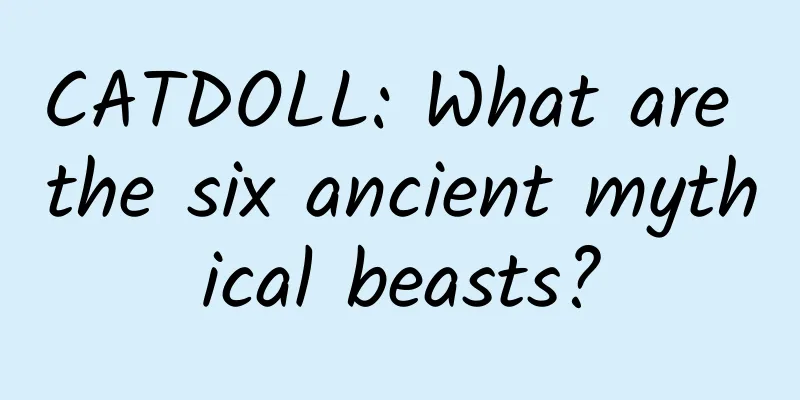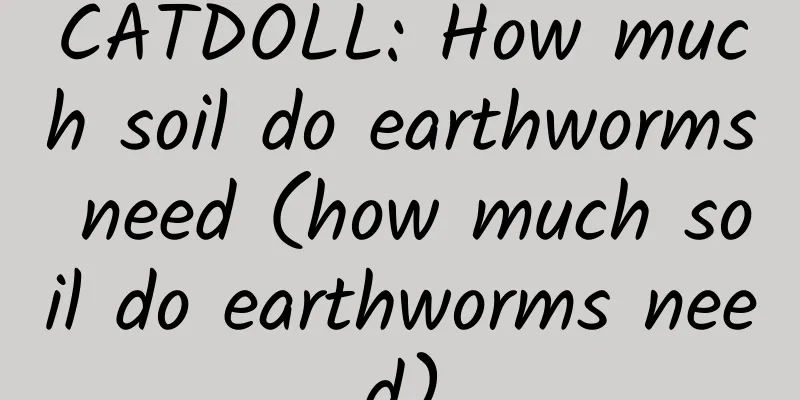CATDOLL : CATDOLL: What are the six ancient mythical beasts?

|
Six Ancient Gods: White Tiger, Black Tortoise, Vermillion Bird, Azure Dragon, Gou Chen, Teng Snake Introduction to Ancient Chinese Mythical Beasts [White Tiger] (baihu) In China, the white tiger is the god of war and killing. The tiger has many magical powers, such as warding off evil, warding off disasters, praying for good harvests, punishing evil and promoting good, making money, and getting married. And it is one of the four spirits, and of course it is transformed from the stars. It is composed of the seven western constellations among the twenty-eight constellations: Kui, Lou, Wei, Ang, Bi, Zi, and Shen. So it represents the west, and its white color is because it is the west. The west belongs to gold in the five elements, and the color is white. So it is called the white tiger not because it is white, but from the five elements. Xuanwu White Tiger [Xuanwu] (xuanwu) Xuanwu is a kind of spiritual creature composed of a turtle and a snake. The original meaning of Xuanwu is Xuanming, and the ancient pronunciations of Wu and Ming are the same. Xuan means black; Ming means yin. Xuanming was originally a description of tortoise divination: the tortoise's back is black, and tortoise divination is to ask the tortoise to go to the underworld to ask the ancestors, bring back the answer, and show it to the world in the form of divination. Therefore, the earliest Xuanwu was a tortoise. Later, the meaning of Xuanming continued to expand. Turtles live in rivers, lakes and seas (including sea turtles), so Xuanming became the god of water; turtles are long-lived, so Xuanming became a symbol of immortality; the original underworld was in the north, and the oracle bone divination of the Shang Dynasty was "the divination must be facing north with the Vermilion Bird", so Xuanming became the god of the north. [Vermilion Bird] (zhuque) Phoenix is a spiritual creature that represents happiness in China. There are many kinds of its original forms. Such as pheasants, peacocks, eagles, swans, black birds (swallows), etc. . . . There is also a saying that it was transformed from the Buddhist Garuda. The phoenix in the phoenix myth has a chicken's head, a swallow's chin, a snake's neck, a fish's tail, and five-color patterns. There are five types of phoenixes, divided by color: red is the phoenix, green is the phoenix, white is the swan, and the yellow and purple phoenixes can also be called the red bird or the black bird. The red bird is one of the four spirits. Like the other three, it comes from the stars and is the general name of the seven southern stars: Jing, Gui, Liu, Xing, Zhang, Yi, and Zhen. The association is the red bird. Red is red, like fire, and the south belongs to fire, so it is called the phoenix. It also has the characteristic of rebirth from the ashes, just like the phoenix in the west, so it is also called the fire phoenix. Qinglong [qinglong] In China, the status of the dragon is much higher than that of India. Because in China, the dragon is a divine creature, supreme, and a symbol of the emperor. It is also the representative of the East and belongs to the wood element in the five elements. Because the blue color belongs to the wood element, there is a saying that the blue dragon is on the left and the white tiger is on the right. The stars are the seven eastern ones among the twenty-eight stars - Jiao, Kang, Di, Fang, Xin, Wei, and Ji. The ancients imagined them as the image of a dragon. Because they are located in the east, according to the theory of Yin-Yang and Five Elements to match the colors of the five directions, the color of the east is green, so it is called "Qinglong". There is also a saying that dragons are lustful. When they mate with cows, they give birth to unicorns, and when they mate with pigs, they give birth to elephants. There is also a saying that a dragon gives birth to nine sons, none of which look like dragons. It is like this: The eldest son is called Qiuniu: He loves music, so he often stands on the head of a musical instrument. For example, the Han people's huqin, the Bai people's three-stringed qin, etc. The Mongolian horse-head fiddle may also be a variant of Qiuniu. The second son is Yabi: He loves killing, so he is often placed on weapons to intimidate the enemy. At the same time, he is used in ceremonial guards to appear more majestic. The third son is Chaofeng: He is a beast-shaped dragon, which looks a bit like a dog. He is good at looking out, so he is often placed on the corners of the temple. It is said that he can intimidate demons and eliminate disasters. The fourth is Pulao: it likes to roar, so people put it on the bell, mostly in the image of Pulao. It is said that it lives on the seashore, but is very afraid of whales. Once a whale attacks, it will scream in fear. So people made the wooden pestle into the shape of a whale to make the bronze bell especially loud. The fifth is Suanni: it looks like a lion. It is a foreign product, introduced to China along with Buddhism, so its personality is a bit like Buddha. It is very quiet and loves fireworks. So it is often placed on the Buddha's seat or incense burner to let it protect the descendants of Buddhism and carry the Dharma. The sixth son is Baxia: also known as P-grain uranium ping-pong O just blind climb that 1 called quail sedan chair winding green onion Shuo love skeleton forgiveness: the 100-year-old son of the emperor, the emperor of the Han Dynasty ... In the history books, there are many kinds of "gouchen", which are the "gouchen" in modern times. 【勾陈】(gouchen) The "gouchen, gouchen and hookchen" recorded in history books are all the "gouchen" we know today. 《 Snake [Snake Zen] (tengshe) The flying snake mentioned in ancient books Tengshe is empty, unreal, cunning, treacherous, full of worries and doubts: many falsehoods, false words and false beliefs, nothingness is hard to rely on, false feelings, false, empty, unreal, hypocritical, cunning, and unreliable. Snakes are scheming, snakes are suspicious, worried, suspicious, or very suspicious. Snakes are worried, worried, entangled in worries, upset, irritable, very unhappy, or confused. Snakes are not happy, good at hiding the truth, good at hiding without being known, and don't like to tell the truth. Snakes are snakes, ropes, cords, belts, etc. They are soft and lingering. Snakes are long, long objects, long and curved. Curled, turning around. Snakes are inextricable, entangled, entangled, entangled, and are very strong. They are difficult to deal with, very troublesome, and will not let go or are versatile and skillful. Snakes are ugly, ugly, and not good-looking. They are not beautiful in appearance. Snakes are smooth and moist. Snakes are poisonous, toxins, poisonous gases, venom, and poisons, and poisoning incidents often occur. Snakes are poisonous, vicious, and vicious. Snakes are poisonous snakes, symbolizing vicious mouths. Snakes are changeable, changeable, and changeable; weird and unpredictable; strange, weird, such as weird, strange, evil, and devils. They are good at making mischief and acting strangely. They are surprised by the rare things. Snakes are startled, surprised, unexpected, surprising, startling, frightened, horrified, horrified, and frightened; they make people restless, restless, and mentally uneasy; they are confused. Snakes are gloomy, dark, at night, secretive, evil, and guard against villains' plots. Snakes represent dreams, many dreams, strange dreams, and frequent awakenings from dreams; they represent uneasy beds, uneasy beds, difficulty sleeping, difficulty falling asleep, and frequent insomnia. Snakes are yellow, black, and white. Snakes represent roads. [Phoenix] (fenghuang) The phoenix (Chinese phoenix/phoenix) is a mythical animal and the king of birds in Chinese mythology and legends; it is also called the Vermilion Bird, the Red Bird, the Fire Bird, the D Chicken, etc. In Western mythology, it is also called the Fire Bird or the Immortal Bird. It is generally a flamingo with a relatively long tail and is surrounded by fire. It is estimated that people have processed and evolved the flamingo through mythology. According to mythology, every time the phoenix dies, a fire will burn all over its body, and then it will be reborn in the fire and gain a stronger vitality than before, which is called "Phoenix Nirvana". This cycle repeats itself, and the phoenix gains eternal life, so it is called the "Immortal Bird". Like the Qilin, the phoenix is a general term for both male and female, with the male being the phoenix and the female being the phoenix. The general name is the phoenix, so the word phoenix is a compound word structure. Phoenixes flying together are a symbol of good luck and harmony. Like the image of the dragon, it became more and more complex as time went by, with a wild goose head, a unicorn hip, a snake neck, a fish tail, stripes, a turtle body, a swallow's chin, and a chicken's beak. Since ancient times, the phoenix has become an important part of Chinese culture. According to Guo Pu's note in Er Ya: Explanation of Birds, the characteristics of the phoenix are: "chicken head, swallow chin, snake neck, turtle back, fish tail, colorful, and about six feet tall." "Originating from the country of gentlemen in the East, it soars beyond the four seas, passes Kunlun, drinks from the Dizhu, washes its feathers in the Ruoshui, and stays in the Fengxue. When it is seen, the world will be at peace." The "Illustrated Praise of the Classic of Mountains and Seas" says that there are five kinds of patterns: "The head pattern says virtue, the wings pattern says obedience, the back pattern says righteousness, the belly pattern says faith, and the chest pattern says benevolence. [Qilin] Qilin[1] An animal in ancient legends. It looks like a deer, has horns on its head, scales all over its body, and a tail like an ox's tail. The ancients believed it to be a benevolent animal and a lucky animal, and used it to symbolize good fortune. 2. A metaphor for people with outstanding talents. Qilin is endowed with excellent qualities in legends. For example, it is said to be gentle and kind, not to cover insects or break grass, to have horns on its head with flesh on its horns, and to have weapons but not to use them, so it is called a benevolent animal. It is long-lived and can live for two thousand years. It can spit fire and its voice is like thunder. [杌]杌[2] Originally, he was just an evil person that people feared and hated. According to the 18th year of Duke Wen of the Zuo Zhuan, "Zhuanxu had a son who was incompetent and could not be taught. He did not know how to bend his words. If he was taught, he would be stubborn. If he was left alone, he would be arrogant and cruel. He would disrupt the order of nature. The people of the world called him Wu." This evil person who could not be taught eventually evolved into a famous demon beast in ancient times after his death. The "Shenyijing: Western Wilderness" records that "In the wilderness in the west, there is a beast that looks like a tiger with dog hair, is two feet long, has a human face, tiger feet, pig teeth, and a tail that is eighteen feet long. It disturbs the wilderness and is called Wu. ” It is already a strange and distorted image. Rather than being a demon beast, it is more like the product of a failed biochemical experiment and nuclear leakage. [Xiezhi] Xiezhi [3] A famous mythical beast produced under the ancient divine judgment system, also known as the "law beast". According to "Lunheng" and "Huainanzi? Xiuwu Chapter", its body size is as big as an ox and as small as a sheep. It looks roughly like a unicorn, with thick black hair all over its body, bright eyes, and a single horn on its forehead. It is said that if the horn is broken, it will die. Some have been seen with wings, but most do not have wings. It has a high intelligence and can understand what people say. It will use its horns to resist dishonest and disloyal people. In later generations, ordinary sheep were often raised in temples to replace Xiezhi [Baize] Baize [4] When the Yellow Emperor was touring the East China Sea, he encountered this beast. This beast could speak and understand the feelings of all things. He asked about the ghosts and gods in the world. Since ancient times, there have been 11,520 kinds of spirits and wandering souls. Bai Ze told him about it, and the emperor ordered it to be drawn and shown to the world. It is recorded in "Xuanyuan Benji", "Baopuzi (Extreme Words)", and "Suiyingtu". Guiche [5] [Guiche] Also known as the nine-headed bird. It is red in color and looks like a duck. The wings of a large one are about ten feet wide. It is blind during the day and clear at night. When it is slightly cloudy, it will fly and cry. It likes to enter people's homes and stun people's souls. There is also a saying that the nine heads were once bitten by a dog, and blood often dripped. If there is blood dripping, there will be misfortune. (This is probably an individual case) It is recorded in "Sanguo Dianlue", "Lingbiao Luyi", "Zhengzitong", and "Gufeng". Zaochi [6] [Zaochi] (zaochi) A humanoid beast with teeth three feet long, shaped like a chisel, extending below the chin, and holding a spear and shield (it should have a certain intelligence). It was once shot and killed by Yi in the wilds of Shouhua. Recorded in the Classic of Mountains and Seas (Overseas Southern Classic) (Great Wilderness Southern Classic) and Huainanzi (Ben Jing Xun). [Henggongyu] Henggongyu [7] Born in Shihu Lake, which is always frozen. Seven or eight feet long, shaped like a carp but red, it lives in the water during the day and transforms into a human at night. It cannot be stabbed, and will not die if boiled. It will die if boiled with two black plums. Eating it can cure evil diseases. Recorded in the Shenyi Jing (Northern Wilderness Classic). [Hou] A divine beast - Hou is shaped like a rabbit, with two pointed ears, only a foot long. Lions are afraid of it, because if its roar drowns the body, it will rot. Recorded in the Yanbo Yu Tan. [Chongmingniao] Chongmingniao [8] In the "Records of Lost and Prohibited Things", it is said that during the 70th year of Yao's reign, the country of Jizhi presented a bright bird, also known as Shuangqing, which means "in the eyes". It looks like a chicken and sings like a phoenix. It sheds its feathers and flies with its fleshy wings. It can chase away wild beasts and wolves, and prevent evil spirits and disasters from harming it. Sometimes it comes several times a year, or never comes for several years. The people of the country sweep their doors and windows to keep the Chongming bird. If the Chongming bird does not come, the people of the country will carve a wooden or bronze statue of this bird and put it between the doors of the bright door, and then the evil spirits will naturally retreat. Therefore, even now, people carve wooden statues, make bronze statues or draw images, so now chickens are painted on the door. [Bifang] In the "Classic of Mountains and Seas. Western Three Classics", it is said that in the Zhang'e Mountain, there is a bird that looks like a crane, has one foot, has red stripes and a white beak. It is called Bifang. "Overseas Southern Classic" says: "The Bifang bird is in the east, west of the Qingshui River, and has only one foot." And "Huainanzi. In the "Si Lun Xun", it is said that wood gives birth to Bifang. Therefore, some people say that Bifang is a wood spirit, and its shape is a bird, one-legged, and it does not eat grains. In the "Zhang Heng (Tokyo Fu) in the Selected Works of Literature", it is said: "Huafang... an old father god, like a bird, with two legs and one wing, often holds fire in his mouth and causes disasters in people's homes." And in the "Han Feizi. Shiguo", it is said: "In the past, Huangdi gathered ghosts and gods on the top of Xiqin Mountain, drove an elephant chariot and a dragon, and harmed Bifang. Yuan Ke said that Huafang is a phoenix, and the phoenix is the sun bird, so "when it is seen, there will be false fire in its mouth." "Pian Ya" says: "Bifang is a bird that foretells fire." Phoenix is a god and also a symbol of disaster. "Huainanzi. Ben Jing Xun" says: "In the time of Yao... a strong wind was harmful, so Yao sent Yi... to capture the wind in the Qingqiu Marsh." The strong wind is the big phoenix. "Huainanzi" "wood gives birth to Bifang" is influenced by the five elements, which means that wood gives birth to fire. Because Bifang is a fire bird, Bifang is used to represent fire, not to refer to Bifang being born from wood. [Taotie] (taotie) "Shenyijing: Southwest Wilderness" says: "There is a man in the southwest, with a hairy body and a pig on his head. He is greedy and vicious, hoards wealth but does not use it, and is good at stealing other people's grain (the above two sentences were originally "like to hoard wealth, but not eat other people's grain", according to the "Shiji: The Five Emperors" commentary). The strong rob the old and weak, and fear the strong and attack the single, so they are called Taotie. Taotie in "Spring and Autumn Annals" is the untalented son of Jinyun clan." "Zuo Zhuan: Wen Gong 18th Year" says: "Jinyun clan has an untalented son, who is greedy for food and drink, and takes bribes. He is greedy and extravagant, and can never be satisfied; he accumulates wealth and knows no limit; he does not distinguish between the lonely and the widowed, and does not care about the poor and the needy. The people of the world compare him to the three evils and call him Taotie." The so-called "Spring and Autumn Annals" in "Shenyijing" refers to this. "Lüshi Chunqiu•Xianshi" says: "There is a Taotie in Zhou Dynasty, with a head but no body, who eats people before swallowing them and harms himself." Luo Mi of Song Dynasty wrote in the note of "Lu Shi•Chi You Zhuan": "Chi You is a god of heavenly symbols, with unusual appearances. Many of the bronze vessels of the Three Dynasties are images of Chi You, which are a warning to greedy and cruel people. Its image is usually in the shape of an animal with flesh wings." Judging from what he said, it is probably Taotie. "Zuo Zhuan" says that Taotie is "the untalented son of Jinyun clan", and the "Shiji•Wudi Benji" quotes Jia Xuan as saying: "Jinyun clan is of the Jiang surname, a descendant of Yan Emperor, and was an official in Jinyun during the time of Huangdi." Chi You's surname is Jiang, and he is also a descendant of Yan Emperor ( "Lu Shi•Chi You Zhuan"), so Chi You is likely to be Taotie, the "untalented son" of Jinyun clan. In addition, the "roe deer (a bird)" recorded in "Classic of Mountains and Seas•Beici Erjing" was annotated by Guo Pu and believed to be the Taotie in "Zuo Zhuan". Appendix: roe deer: "Classic of Mountains and Seas: Northern Three Classics": "In the Gouwu Mountain... there is a beast, which looks like a sheep's body and a human face, with eyes under its armpits, tiger teeth and human claws, and its voice is like a baby. It is called roe deer, and it eats people." Guo Pu's note: "It is a greedy creature. It is very strong and can eat a lot of people. It is very easy to get sick! [Yuanfeiji] Also known as Fanmingji and Muyuji. It is purple and has eyes under its wings. It rises at sunrise and returns at sunset. It is recorded in "Dongmingji". [Feifei] It looks a bit like a raccoon, with a white tail. Raising it can relieve worries. It is recorded in "Classic of Mountains and Seas (Zhongshan Jing)". [Zhujian] It has a human face and a leopard body, cow ears and one eye, a long tail, and can make a loud noise. It holds its tail in its mouth when walking and coils its tail when resting. It is recorded in "Classic of Mountains and Seas (Northern Mountains)". [Hundun] It has long hair and four legs, like a dog, but has a belly but no internal organs. It resists good people and relies on evil people. (There is another theory about the god of chaos, which will be explained separately and not included here) The chaos in "Shenyi Jing (Western Wilderness Classic)" is the chaos that has been vilified by humans. It describes Chaos as a beast that looks like a dog and a bear, with eyes but can't see, ears but can't hear, legs but can't walk, and a belly but no lungs, and has extremely bad morals. When it meets a virtuous person, it will use brute force to resist [Yingsheng Chong] Living in the human abdomen. Every time the host makes a sound, there will be a small sound in the abdomen that imitates it, and it will get bigger and bigger. It can be cured with thunder balls. It is recorded in "Xu Mo Ke Hui Xi" and "Sui and Tang Jiahua". [Qingji] Also known as Yaoli. Zejing, humanoid, about ten centimeters tall. Yellow clothes and yellow hat, called the yellow cart, travel a thousand miles a day. Calling its name can make it report (also said to catch fish). In history, there are also people named after it (Wu Wang Liaozi, fierce general) and towers named after it. [Pixiu] Also known as Guifu. It looks like a turtle and is good at carrying heavy loads. It has been carrying stone tablets for years. People can see this hardworking strongman everywhere in temples and ancestral halls. It is said that touching it can bring blessings. [Bi'an] Also known as Xianzhang. It looks like a tiger, is powerful, and likes prison lawsuits, so people engraved it on the prison door. The tiger is a fierce beast, so it can be seen that the use of Bi'an is to enhance the majesty of the prison and make criminals afraid. [Pixiu] Pixiu is also known as Tianlu and Pixie. It is a mythical beast in ancient Chinese mythology and legends. It has a dragon head, a horse body, and a unicorn foot. It is shaped like a lion, has gray fur, and can fly. Pixiu is fierce and powerful. It is responsible for patrolling in the sky to prevent demons, ghosts, plagues and diseases from disturbing the heavenly court. In ancient times, people often used Pixiu as a name for the army. It has a mouth but no anus, can swallow everything and never defecate, can attract wealth and treasure, only take in but not out, and has special magical powers. Many Chinese people now wear jade products of Pixiu for this reason. There is a record in the "Western Regions" of the Book of Han: "There are Taoba, lions, and urine cows in the Wugoshanli State." Meng Kang commented: "Taoba, also known as Fuba, is like a deer with a long tail. The one-horned one is called Tianlu, and the two-horned one is called Pixie. "The pixiu is the one that can ward off evil spirits. However, after the change of dynasties, the pixiu's appearance has become more uniform, such as short wings, double horns, curled tail, whiskers often connected to the chest or back, bulging eyes, and long fangs. The pixiu that is commonly seen nowadays mostly has a single horn and a long tail. [Chiwen] Also called Chiwen, Chiwei, Haowang, etc. It looks like a four-legged snake with its tail cut off. This dragon son is good at looking around in dangerous places and also likes to swallow fire. According to legend, when Emperor Wu of the Han Dynasty built the Bailiang Palace, someone wrote a memorial saying that there was a kind of fish in the sea with a curly tail like an owl, that is, a harrier eagle, which could spray waves and rain, and could be used to ward off fire, so its image was sculpted on the corners, ridges, and roofs of the palace. [Jiaotu] It looks like a snail or clam and likes to keep its mouth shut, so people often carve its image on the door knocker or on the door panel. When snails or clams encounter foreign invasion, they always close their shells tightly. People use it on doors probably because it can be closed tightly for safety. [Qiuniu] It looks like a small yellow dragon with scales and horns and loves music. This dragon with musical cells is not only on the Han Chinese huqin, but also on the dragon-headed yueqin of the Yi people, the three-stringed qin of the Bai people, and some musical instruments of the Tibetan people. [Pulao] It looks like a dragon but is smaller than a dragon and likes to roar. It is said that Pulao lives by the sea and is most afraid of whales. Whenever he encounters a whale attack, Pulao screams non-stop. Therefore, people put its image on the bell and carve the long wood that strikes the bell into the shape of a whale, so that it can strike the bell loudly and clearly. [Yazi] It looks like a jackal and likes bloody killings. It is often carved on the handles and scabbards of swords. The original meaning of "睚眦" is to glare angrily, as the saying goes, "A favor of a meal must be repaid, and a grudge of a 睚眦 must be avenged." Revenge cannot avoid bloody killings, so it is natural for this dragon son who looks like a jackal to appear on the handles and scabbards of swords. [Suanni] Legend has it that it looks like a lion, likes smoke and likes to sit. Seeing that it has patience, the Lord Buddha took it under his crotch and used it as a mount. Therefore, its image usually appears on incense burners, followed by puffing smoke and exhaling mist. The lion, an animal that dares to eat even tigers and leopards and has a very majestic appearance, was introduced to China along with Buddhism. Since the Buddha Shakyamuni is likened to a fearless lion, people naturally arranged it as the Buddha's seat, or carved it on an incense burner so that it can enjoy the incense. [Kui] (kui) The "Classic of Mountains and Seas: Great Wilderness" records: There is a mountain called Liupo in the East China Sea, which is 7,000 miles into the sea. There is a beast on it, which looks like an ox, with a blue body and no horns, and one foot. Whenever it enters or leaves the water, there will be wind and rain. Its light is like the sun and the moon, and its sound is like thunder. Its name is Kui. Huangdi got it, used its skin to make a drum, and stuck it with the bones of thunder beasts. The sound could be heard for 500 miles, and it was used to intimidate the world. Legend has it that there is a "Liupo Mountain" in the East China Sea of China, and Kui lives on this mountain. Kui's body and head are like an ox, but it has no horns, and has only one leg. It is blue-black all over. It is said that Kui emits light like the sun and the moon and a thunderous cry. Whenever it enters or leaves the water, it will cause a storm. In the war between Huangdi and Chiyou, Huangdi captured Kui, used its skin to make a military drum, and used its bones as drumsticks. As a result, the sound of hitting this drum could be heard for 500 miles, which greatly boosted the morale of Huangdi's army and frightened Chiyou's army. Kui was born with heaven and earth. There are only three of them in the world. The first one was killed by Qin Shi Huang. But Qin Shi Huang did not have the achievements of Huangdi, so the drum made of this Kui's skin is not so magical. [Yujiang] "Yujiang" is the legendary god of the sea, wind and plague, also known as "Yuqiang" and "Yujing", and is the grandson of Huangdi. The sea god Yujiang ruled the North Sea. His body is like a fish, but he has human hands and feet, and rides a two-headed dragon; the wind god Yujiang is said to be named "Xuanming", and is a minister of Zhuanxu. He has a human face and a bird body, a green snake hanging from each ear, and two green snakes under his feet. He dominates the north. It is said that Yujiang's wind can spread plague. If you encounter the northwest wind it blows, you will be injured, so the northwest wind is also called "Lifeng" by the ancients. [m] (yayu) Also known as "E窳" (yayu). Legend has it that m was once a god of heaven, killed by a god named "Wei", and later resurrected, but turned into a man-eating monster. There are many different opinions about the appearance of M, such as a human face and a dragon body, the same size as a raccoon, a human face and an ox body with horse legs, or a giant beast with a dragon head and a tiger body (as shown in the picture). It is said that because M likes to eat humans, Emperor Yao ordered Houyi to kill it. [Huo Dou] "Huo Dou" originally refers to a minority group living in southern China in legend, but it is described as a monster with a dog-like appearance, swallowing dog feces and spewing flames. Wherever Huo Dou goes, fires will break out, so the ancients regarded it as a sign of fire and an extremely ominous symbol. There are also claims that Huo Dou swallows fire and excretes flaming feces. Huo Dou should be a symbol of the southern Chinese tribes that have been demonized in mythology. [Xu Hua] Xu Hua is an evil ghost that brings disaster to people. Legend has it that Xu Hua wears a red robe and has an ox nose, one foot is on the ground with a shoe, the other foot is hanging on the waist, and there is an iron fan inserted in the waist. It is said that Emperor Xuanzong of Tang once saw a little ghost stealing his jade flute and Yang Guifei's sachet in a dream. Xuanzong called the little ghost, who called himself "Xuhao" and liked to steal other people's property. He could also steal other people's joy and make him depressed. Xuanzong was furious and immediately called for help. Then a big ghost appeared and tore Xuhao in half and ate him. The big ghost refers to Zhong Kui. [Wutong Shen] Five lustful demons in Chinese legend, said to be causing trouble in the south. There was once a saying that "North Fox and South Wutong". Wutong Shen often went to people's homes to look for beautiful women. In fact, Wutong Shen is also called Wuxian Shen, the five sons of the God of Mount Tai. There are some records about Wutong Shen in "Strange Stories from a Chinese Studio", saying that a scholar named Wan killed three of them and seriously injured another one. The last one was raped by the maid of the daughter of the Golden Dragon King, and finally raped to death. [Sanzuwu] The ancient Chinese sun spirit, also regarded as the messenger of the sun's movement. According to ancient Chinese legend, the sun was inhabited by a three-legged crow. People revered the sun, and the three-legged crow was worshipped as a symbol of good fortune. It is said that there were ten three-legged crows, which kept flying in the sky, causing drought and scorching heat on the earth. Emperor Yao ordered Houyi to shoot all the three-legged crows, but Houyi shot down nine and left one. Since then, there was only one sun and it set in the evening. There are also claims that the three-legged crow is a spirit serving the Queen Mother of the West. [Hua She] A water beast. It has a human face and a jackal body, has wings, moves like a snake, and makes a sound like a shout. It attracts floods. It is recorded in the Classic of Mountains and Seas (Zhongci 2). [Ying Zhao] It has a human face and a horse body, has tiger stripes, has bird wings, and makes a sound like a pomegranate. It is said to be a god who looks after the garden for the Emperor of Heaven, but it looks like a mythical beast at best. It is recorded in the Classic of Mountains and Seas (Xici 3). [Xuan Feng] It is actually a giant bee with a belly as big as a pot. It stings people and is poisonous and can kill people. It is recorded in Chuci (Zhaohun). 【Qingniu】 It is mainly famous as Laozi's mount. But its true prototype is a thousand-year-old wood spirit (the earth spirit is a jade sheep). It is recorded in Songgaoji and Luyizhuan. 【Chitie】 It looks like a water buffalo, but has huge horns, black fur, and feeds on iron. Its excrement is as sharp as steel and can be used as a weapon. It is recorded in Shenyijing (Zhonghuangjing). 【Shansao】 A mountain god with a human face and a monkey body, one foot, can speak human language, and can change. It especially likes to eat shrimps and crabs. 【Huoshu】 Also known as Huoguang Beast. It lives in volcanoes (not the volcanoes we generally refer to now, but burning forests), weighs 100 jin (it should be very large), its fur is nearly one meter long and as thin as silk, and it dies when it sees water. Its fur can be made into "Huoan cloth" (if it is dirty, it can be cleaned by burning it with fire). It is recorded in Shenyijing (Nanhuangjing) and Shizhouji. 【Shangyang】 A one-legged bird that brings heavy rain. Recorded in Shuoyuan (Bianwu). [Eshou] Also known as Dan. It has a human face and a rabbit body, and can speak human language. It likes to lie, and its words are often untrue. Its meat is delicious, but you can no longer tell the truth after eating it. [Minniao] (This is a single character) Its mouth is red and its body is emerald. It can resist fire. Recorded in Shanhaijing (Western Mountains). [Qinyuan] Bird, shaped like a bee, about the same size as a mandarin duck (probably a giant bee). It stings animals to death, and stings trees to wither. [Hook Snake] Snake, more than 20 meters long, with a forked tail. When hunting, it uses its tail to hook animals on the shore in the water and eat them. Recorded in Shuijingzhu (Ruoshui). [Bingfeng] Pig-like, black, with a head in front and back. Shudang has a head on the left and right. [Fuzhu] Like a white deer, but with four horns. It attracts floods. [Dangkang] Pig-like with teeth, named after its cry. It can predict a good harvest. Recorded in the Classic of Mountains and Seas (Eastern Four Classics). [Mountain Spider] A giant spider, as big as a wheel, whose silk can stop bleeding. Recorded in the Southern New Book. [Singing Snake] It is roughly the same size as a snake, but has four wings, and makes a pan-pan sound. If seen, there will be a severe drought. Recorded in the Classic of Mountains and Seas (Central Second Classics). [South Sea Butterfly] A giant butterfly. Someone once caught it, and after removing its wings and whiskers, it still weighed 80 kilograms and was extremely delicious. Recorded in the Lingnan Yiwuzhi. [You'an Bird] It is similar to a small monkey with stripes, often laughs, and lies down when it sees people. It is named after its cry. Recorded in the Classic of Mountains and Seas (Northern Mountains). [Li Li] A pig-like beast with a protrusion behind its feet, and its sound is like a dog barking. It should have the ability to manipulate soil. Recorded in the Classic of Mountains and Seas (Southern Second Classics). "Classic of Mountains and Seas": "There is a beast, its shape is like a pig, with spurs, its sound is like a dog barking, its name is Li Li, when it is seen, there will be many earthworks in the county." [Ma Jiao] Similar to a horse, white body and black tail, with a horn on its head, sharp teeth, claws on its four feet, and sounds like drums. It feeds on tigers and leopards. Some say it can resist soldiers. Recorded in "Classic of Mountains and Seas (Overseas North Classic) (Western Four Classics)", "Guan Zi (Xiao Wen)", and "Book of Zhou (Wang Hui)". [Shu Hu] Horse body and bird wings, human face and snake tail (similar to Ying Zhao). Likes to carry people. Recorded in "Classic of Mountains and Seas (Western Four Classics)". [Au] Like a sheep but not a sheep, like a pig but not a pig. It eats dead brains underground and can speak like a human. It can only be killed by inserting a cypress branch into its head. [Huan] It is several feet long, similar to an ox, with bright blue eyes, and its four feet are in the soil. Although it moves, it does not move. Only drinking wine can cure it. Because it is the gathering place of sorrow, wine can make people forget sorrow, so it can be eliminated. It is recorded in "Soushen Ji". [Jiuying] A monster of water and fire, killed by Yi. [Fei Lian] A deer body, a head like a bird, with horns, a snake tail and leopard stripes. Some say it is the god of wind. But I think it is more reasonable to call it a mythical beast that controls the wind and atmosphere. . [Xishu] A giant rat that lives under the ice, weighs a thousand pounds, and its meat is edible. Its fur can be used to make clothes and quilts, and is the best for keeping warm. [Ao Yin] A humanoid, wearing tattered clothes, with sharp claws on its hands. It attacks single travelers and likes to eat human brains. Its tongue is extremely long, and sometimes it stretches out and coils on the ground to rest. It can be killed by throwing a hot stone at it. [Tiangou] The name of a mythical beast in legend. It can prevent harm. This theory was first seen in the Qin Dynasty. [Triangle Beast] The name of a beast of good fortune in legend. It has a triangle on its head. If the king's laws are sound, this beast will come. The imperial guards have flags with its image painted on them. 【Nine-tailed Fox】 Also known as "Nine-tailed Fox" or "Nine-tailed Bird". A legendary beast. It lives in the mountains of Qingqiu and eats people. The legend of it first appeared in the pre-Qin period. In the Han Dynasty, it was said to be a beast of good fortune, symbolizing the rise of the king. Also, it appears when the world is peaceful, symbolizing the prosperity of the king's descendants. [Jiuying] The name of a monster in legend. It can spit water and fire. It appeared during the reign of Emperor Yao and harmed the world. It was shot and killed by Emperor Yi in the fierce water of Beidi. The legend of it first appeared in the Han Dynasty. [Shanhuijun] Also known as "huizi". A legendary monster. It looks like a dog but has a human face. It smiles when it sees people and moves like the wind. Its appearance is a sign of a great wind disaster. The legend of it first appeared in the pre-Qin period. [Jiaoduan] The name of a beast of good fortune in legend. It looks like a deer but has a horn growing out of its nose. It can travel 18,000 miles a day and is proficient in all languages. This legend first appeared in the Han Dynasty. 【Zhulong】 A mythical beast in ancient Chinese mythology. Also known as Zhuyin, or O-long. It has a human face and a dragon body, and holds a candle in its mouth, illuminating the dark and gloomy northwest. Legend has it that it is extremely powerful. When it opens its eyes, the whole sky is bright, which is daytime; when it closes its eyes, the sky is dark, which is night. Today, cultural historians believe that Zhulong is a myth of the northern dragon totem tribe. 【Earthworm】 【Listen carefully】 |
<<: CATDOLL: How many silver carp should be stocked per acre of water surface?
>>: CATDOLL: What will happen if different types of turtles are combined?
Recommend
CATDOLL: What should you pay attention to when overwintering plants? How should you fertilize plants during the winter? How should you prevent and control overwintering pests and diseases?
1. What are the precautions for plants to overwin...
CATDOLL: How much does a pound of good silk cost? (How much does a pound of good silk cost? Picture)
1. How much does a pound of good mulberry silk qu...
CATDOLL: What is the market price of carp, grass carp, silver carp and bighead carp weighing more than 5 jin in Puyang City on August 20, 2020?
China Business Information Network: Due to the se...
CATDOLL: How to castrate shrimp?
1. How to castrate shrimp? Pickled shrimp Materia...
CATDOLL: Is there a season for silkworm breeding? (Is there a season for silkworm breeding? Why?)
1. What is the season for raising silkworms? Silk...
CATDOLL: Hand-pull sea cucumber hair expansion method
1. Hand-pull sea cucumber swelling method 1. Intr...
CATDOLL: How to breed golden cicada (pictures and text)
Golden cicada is a representative species of Cica...
CATDOLL: The pros and cons of raising snails (What are the pros and cons of raising snails)
1. What are the pros and cons of raising snails? ...
CATDOLL: The efficacy and function of golden-edged earthworm
1. The efficacy and function of golden-edged eart...
CATDOLL: How many stages does the silkworm breeding season have? (From which month to which month does the silkworm breeding season start?)
1. What are the four stages of a silkworm's l...
CATDOLL: What soil should I use to raise snails (soil or sand)?
1. Can I use ordinary soil to raise gray-tipped s...
CATDOLL: How to make money by beekeeping in rural areas?
How to make money by beekeeping in rural areas? B...
CATDOLL: Encyclopedia of Beekeeping Techniques (Electronic Version of Encyclopedia of Beekeeping Techniques)
1. What books should I read when I first learn be...
Is the African lion cat easy to raise?
African lion cats are relatively easy to keep. Ge...









